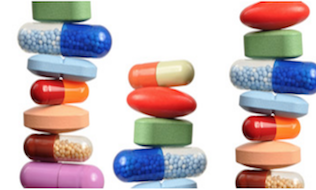

Since Ontario’s youth pharmacare program took effect on Jan. 1, the number of drug claims for those under the age of 25 has been cut in half compared to the first three months of 2017, translating into average savings of four per cent for private drug plans, according to Telus Health.
Its annual research, which draws from its own database of more than 11 million plan members, was presented at the pharmacy benefit provider’s annual conference in Mississauga, Ont., on Tuesday. It found specialty medications accounted for 27 per cent of all private drug plan claims costs in 2017. This ranged from a low of 21 per cent in the three western provinces, where universal drug plans are in place, to a high of 33 per cent in Atlantic Canada, where there’s a higher prevalence of diseases that are treated by specialty drugs.
Read: Drug Plan Trends Report: A snapshot of what’s coming down the pike
While the average cost of non-specialty drugs increased by just one per cent annually since 2008, the cost of specialty drugs (defined as costing at least $10,000 per year) increased by an average of 13 per cent each year in that time period, according to the data. When combined, and keeping in mind that specialty claims have yet to represent more than one per cent of all claims, the overall cost of drugs has grown by an annual average of two per cent since 2008.
Across all types of drugs, the research also found both costs and utilization increased in 2017 compared to 2016. The average eligible cost per prescription (i.e., before plan design measures, such as coinsurance) increased by three per cent, while average monthly utilization per claimant increased by one per cent.
Telus Health also took a closer look at plan designs and claims patterns in its research, revealing the following three opportunities to get better value from drug plans:
- Generic substitution
The research found generic drugs represent 63 per cent of all drug claims, unchanged from 2016 and a modest improvement over 2015 (61 per cent). Drug plans in the United States, by comparison, boast utilization rates of between 75 and 80 per cent. Since just 46 per cent of drug plans tracked by Telus Health included mandatory generic substitution in 2017, there’s clearly room for increased uptake.
Read: Lower generic prices not a cure for drug cost pressures
- Brand prescription where generic is available
In 2016, seven per cent of prescriptions were for higher-priced, brandname drugs where lower-priced generics were available, according to the research. While a very small percentage of plan members may require a brand drug for clinical reasons, the vast majority can be prescribed generics, noted Shawn O’Brien, principal, transformation services at Telus Health, during the presentation.
- Second-line instead of first-line therapies
A closer look at prescribing patterns for diabetes drugs, which is the second highest area of spending for private drug plans, showed that a significant number of plan members could have started treatment with lower-cost drugs, according to the data. Clinical guidelines recommend that people newly diagnosed with diabetes should start treatment with metformin, a generic drug that costs less than $100 a year. However, 31 per cent of plan members started treatment with a second-line therapy, with annual costs between $600 and $2,000.
Telus Health will publish its full report this summer.
Read: Options for getting the best value from drug plan spending
